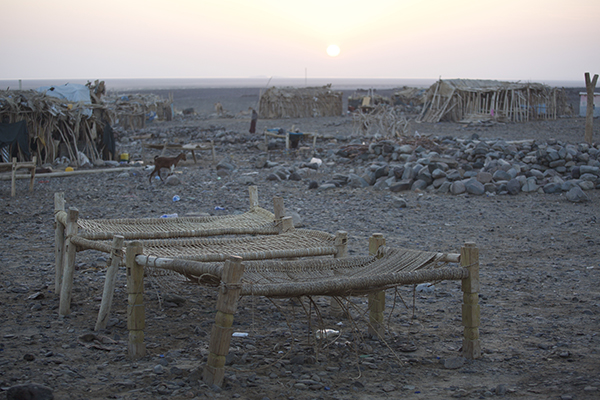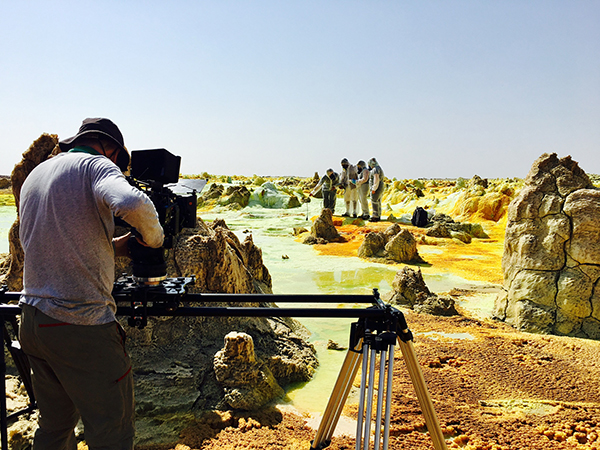All images copyright “One Strange Rock, National Geographic”.
When you’re making a show about how our planet is probably the weirdest place in the whole Universe; and you call that series ‘One Strange Rock’; then it’s a given that you’re going to end up in some pretty unusual locations.
But nothing prepared me for Dallol.

First off it’s hot. Really hot. Before we’d even got close the dashboards of our Land Cruisers had started to melt, the plastic bulging in ugly blisters. I got out to measure the temperature with the pocket thermometer clipped to my backpack. It read 50 degrees. So hot the heat parched my lungs.
In fact it’s the hottest place (year-round) on Earth – and that’s just one of its claims to fame.
It’s one of the lowest locations on the planet (125m below sea level); and amongst the most remote spots you could ever hope (?) to travel to. But all that pales into insignificance compared to what it looks like.

Dallol is situated in the top-right corner of Ethiopia – just a rifle’s throw from the volatile Eritrean border. But the roads run out long before you get that far. Surrounded by the harsh salty deserts of the Afar depression it remains an oddity all on its own.
Eventually we reached a shallow slope that had to be tackled on foot. The walk was less than a mile but in that heat; laden with two cameras, tracks, jib arm, drones and batteries; and with our noses and mouths covered with protective gas masks, it felt much further.
But once we reached the ‘summit’ the view made it all worthwhile.

Dallol has a garishly coloured landscape unlike any you’ve ever seen. Weird crystalline formations of yellow, red, orange and green emerge from an alien terrain. It’s a land unlike any you’ve ever seen before. There is no life here - no plants, no insects, no birds. And with good reason. Acid so concentrated that it measures a minus on the pH scale (yes, really!) bubbles up through the thin crust; and toxic gases like Hydrogen Sulphide, Chlorine and Carbon Dioxide fill the air. Combined, these factors make it one of the most inhospitable environments in the world.
We were there a week, filming a particularly intrepid team of scientists.
Our accommodation was what you might call ‘basic’. A wood and rope bed at a safe distance away and a hut made of sticks to ‘protect’ our kit. Still, it would probably have been peaceful except for the inquisitive goats and the constant noise of the generator needed to recharge our batteries.

In truth our kit suffered more than we did. We lost both our drones, a borescope, two RED cameras and the jib to toxic corrosion. Our repair bill alone would have funded most normal docs!
(Our camera assistant got epidemic typhus too – but that’s a whole other story!)
But I have to say it was the most spectacular place I’ve ever been.

And it was just the first location of fifty featured in the series. We filmed everywhere from 1,604 feet below the Earth’s surface to 1.34 million feet above it; capturing everything from tiny cyanobacteria to massive blue whales; from a baby’s first breath to a mummified corpse. One strange rock indeed.
All images copyright “One Strange Rock, National Geographic”.



